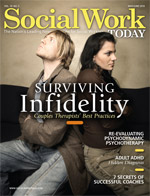|
Legacy: A Powerful Rite of Passage Rabbi Zalman Schachter-Shalomi memorably asks, “Are you saved? I don’t mean in a theological sense but in a computer sense. Have you downloaded your life experience for the coming generations? Have you started doing your legacy work?” As someone who has recently become absorbed in the rich and multifaceted topic of legacy, I have discovered how powerful legacy work can be as a focus for helping older adults create meaning throughout the second half of life. Legacy Defined Legacy is as public as an architectural monument and as private as a letter written to children or grandchildren. It’s as tangible as a bank check and as intangible as a seemingly casual word of advice. And it’s as life enhancing as the Heimlich maneuver and as life denying as the Holocaust. Legacies can be unconscious as well as intentional, intangible as well as tangible; positive, negative, and mixed—primarily handed down by the culture or by individuals. In this column, the focus is on individual legacies intentionally left to the next generation(s) from a heart (or soul)-centered, rather than ego-centered, origin. This means giving with an open, loving heart without conditions or expectations. The question is how can we as life planners for the second half (or third age) use “legacies of the heart” to help our clients make the most of this time of life? The Power of Legacy The need to refine or redefine identity is another developmental challenge at this time of life, whether dictated internally or externally by retirement or other major life changes. As in the case of purpose, identity and legacy are intimately related; they shape each other. Pondering legacies received, given, and those yet to bequeath compels reflection about the patterns, lessons, and meaning of life. Such summing up not only satisfies another later life developmental urge but also undergirds the process of life planning. Thus, legacy provides a compass for clients’ choices about how to spend their remaining time, energy, and material resources. Creating intentional legacies supports vital aging. Bringing something new into the world is, by definition, a creative act that involves learning. We know that creativity and learning support vital aging. We also know that having a sense of purpose and contribution support vital and healthy aging. Moreover, negative legacies received from others can inspire positive ones. Negative legacies—both our own and others’—can inspire actions to forgive and make amends. Our clients can find meaning transmuting negative legacies into positive ones and healing through forgiveness. Finally, intentionally giving concrete legacies of the heart, such as ethical wills, family stories, or annotated treasured possessions, while older adults are alive can solidify, deepen, and heal relationships with those they love. Practical Tips Strategies, exercises, and projects should be tailored to the inclinations of the individual or group. The following are some exercises and projects from which to choose: • Conducting exercises to elicit values, passions, gifts, and dreams that point to purpose and vocation—what clients are called to do or be. • Offering guided visualizations of an elder’s 90th birthday party or his or her deathbed to elicit the legacies given and perhaps yet to be given and to identify the recipients. These can be extremely powerful but must be used with prudence and sensitivity. • Crafting an obituary and/or epitaph. This is a familiar exercise that can turn into a project. • Sharing more fully in conversations with loved ones. This can create a powerful legacy, as presented by Bill McCord in The Gift of You: How to Tell Your Loved Ones Who You Really Are. • Writing an ethical will, sometimes called legacy letters. In ethical wills, we bequeath our inner wealth—our important values, worldview, life lessons, experiences, and specific messages—traditionally in written form, to our loved ones. Despite its nomenclature, it can, and in my view usually should, be given before death. • Writing, taping, illustrating, or photo scrapbooking personal reflections about life experiences, themes, lessons, and family history. Such projects may be less intimidating and thus easier to take on than ethical wills and memoirs, and they are no less valued as tangible reminders of our largely intangible legacies. • Listing the tangible treasures elders wish to pass on with the story of their histories and the personal importance attached to them. Older adults can give such treasures at any time. • Structuring ways for each client or group participant to identify and take on a public legacy project, individually or collectively. Projects can range from ready-made, limited-duration volunteer opportunities to long-term paid or unpaid commitments to social entrepreneurship projects. Structuring includes helping with strategies, resources, accountability, coaching (if applicable) and, in a group setting, mining the group knowledge and imagination, especially for brainstorming ideas and resources. Groups can be formed with the intention of devising and implementing a group legacy project. The idea of legacy will likely resonate with our midlife and older clients, drawing them into the process of life planning and resulting in lives of greater purpose, vitality, and peace. Is it not worth at least trying out this powerful lens for clients, as well as ourselves? — Meg Newhouse, PhD, CPCC, founder and past president of the Life Planning Network, a New England-based community of professionals from diverse fields committed to providing a broad spectrum of planning services and resources for the third age, focuses on legacy and is currently involved in a related book project.
Types of Legacies • Private legacies (intangible): Individual actions such as mentoring, teaching, coaching, counseling, informal conversations, and caregiving, plus simply being who we are can have enormous impact, both directly and indirectly through ripples, for good or ill, intentionally and unintentionally. • Collective/group legacies: Many prefer forms such as volunteering, civic engagement, political action, social entrepreneurship, specifically formed groups for making charitable contributions or addressing a social need because they multiply the impact and provide essential social connections. — MN |

 May/June 2010 Issue
May/June 2010 Issue